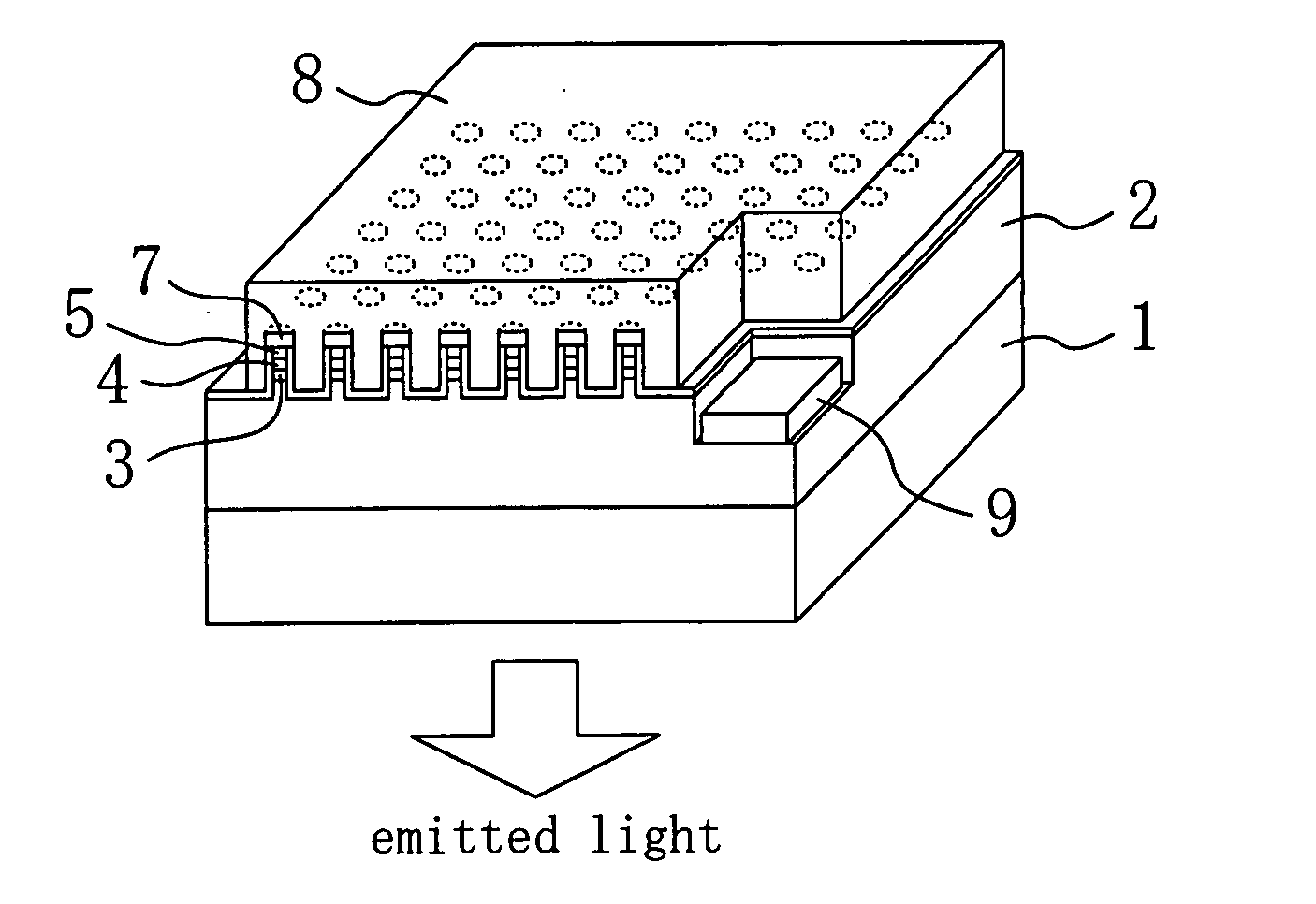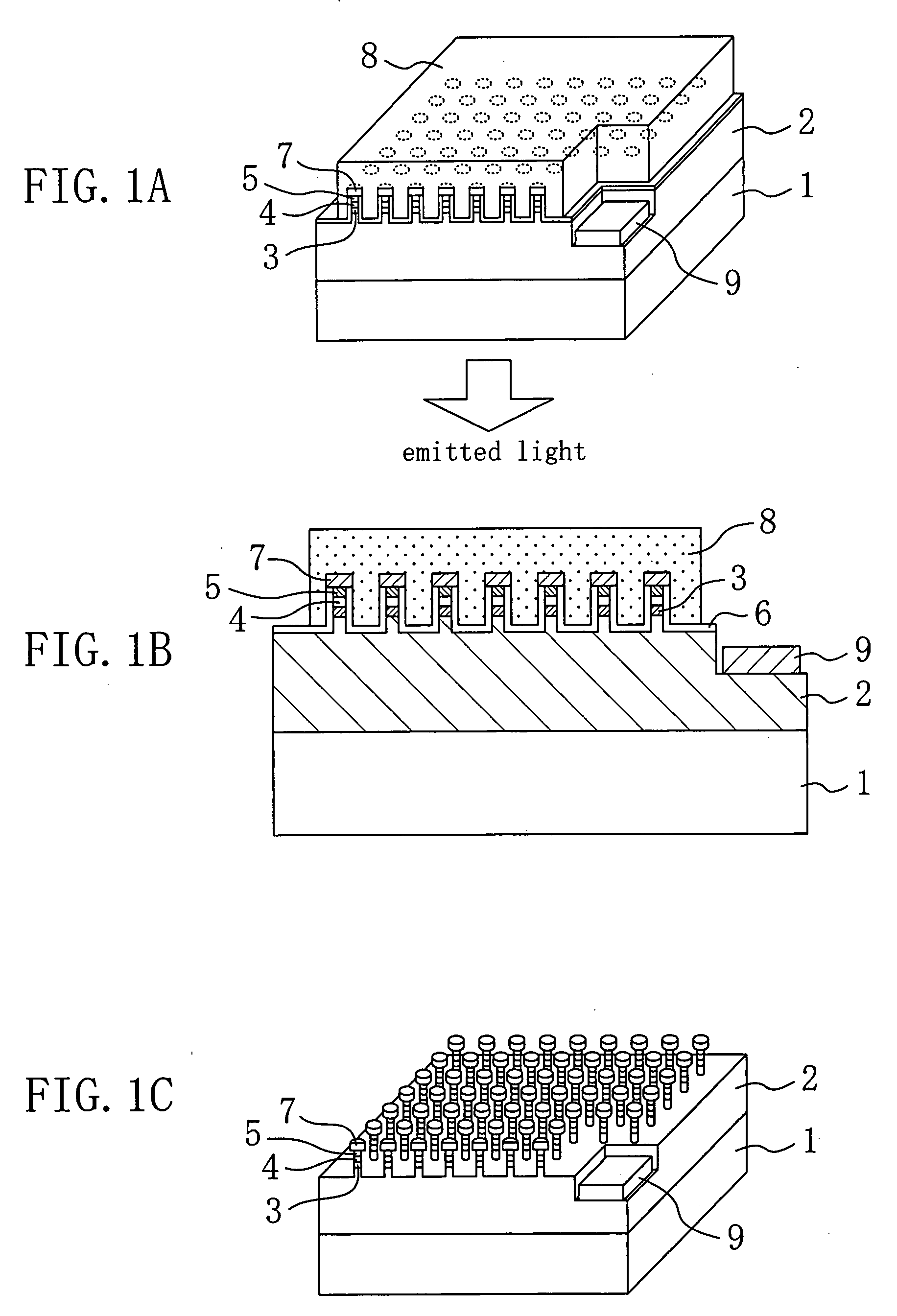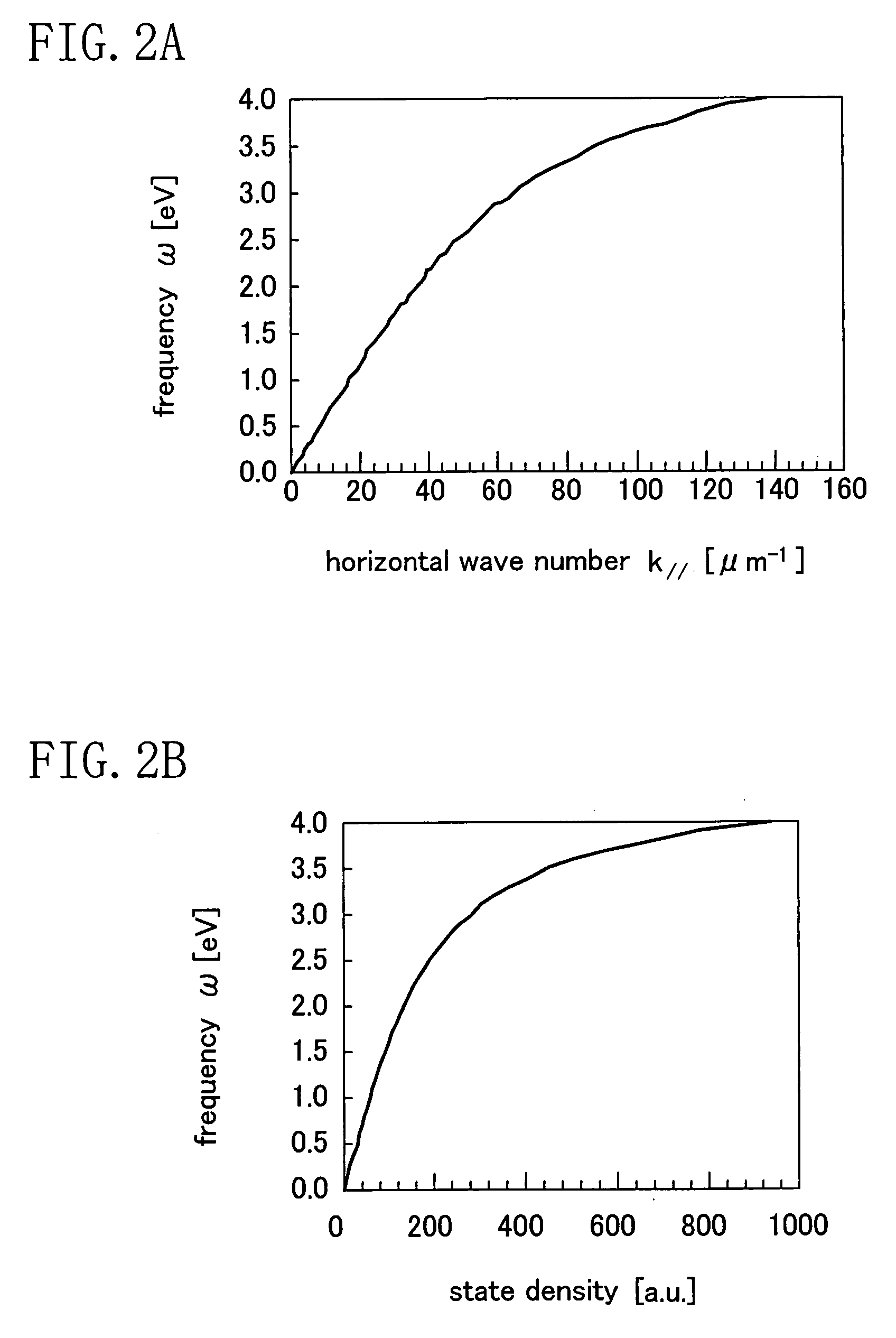Semiconductor light emitting device and method for manufacturing the same
a technology of semiconductors and light emitting devices, which is applied in the direction of semiconductor devices, basic electric elements, electrical appliances, etc., can solve the problems of difficult selection of electrode materials, difficulty in achieving high light emission efficiency, and inability to meet the requirements of surface plasmon generation metal, etc., to achieve the effect of improving the external light emission efficiency
- Summary
- Abstract
- Description
- Claims
- Application Information
AI Technical Summary
Benefits of technology
Problems solved by technology
Method used
Image
Examples
first embodiment
[0065]—Configuration of Semiconductor Light Emitting Device—
[0066]FIG. 1A is a perspective view of a semiconductor light emitting device according to a first embodiment of the present invention. FIG. 1B is a cross-sectional view of the semiconductor light emitting device of this embodiment, taken along a line passing through an n electrode 9. FIG. 1C is a perspective view of the semiconductor light emitting device, where a plasmon generating layer 8 and an insulating layer 6 are not illustrated. A cross-section passing through the n electrode 9 is also illustrated in FIG. 1A for the sake of easy understanding.
[0067]As illustrated in FIGS. 1A and 1B, the semiconductor device of this embodiment comprises: a transparent substrate 1 made of sapphire or the like; a semiconductor multilayer film which is formed on the transparent substrate 1 by crystal growth and is made of a GaN compound semiconductor; a p electrode 7 formed on the semiconductor multilayer film; an insulating layer 6 whi...
second embodiment
[0127]FIG. 10A is a perspective view of a semiconductor light emitting device according to a second embodiment of the present invention. FIG. 10B is a cross-sectional view of the semiconductor light emitting device, taken along a line passing through an n electrode 9. FIG. 10C is a perspective view of the semiconductor light emitting device of this embodiment, where a plasmon generating layer 8 and an insulating layer 6 are not illustrated.
[0128]The semiconductor light emitting device of this embodiment is different from the semiconductor light emitting device of the first embodiment in that holes penetrating through at least an active layer 3 of a semiconductor multilayer film are formed and arranged in a two-dimensional periodic manner. For example, the holes each have a diameter of 150 nm, and are arranged in a square lattice having an interval of 325 nm.
[0129]The semiconductor light emitting device of this embodiment is also different from the semiconductor light emitting device...
third embodiment
[0136]FIG. 12 is a cross-sectional view of a semiconductor light emitting device according to a third embodiment of the present invention.
[0137]In the semiconductor light emitting devices of the first and second embodiments, the continuous plasmon generating layer 8 is formed to fill the minute unevenness formed in the semiconductor multilayer film. In contrast to this, as illustrated in FIG. 12, in the semiconductor light emitting device of this embodiment, holes having a diameter of about 150 nm which penetrate through an active layer 3 are formed in a semiconductor multilayer film, and a plurality of microspheres 12 made of Al, Ag, Au or the like are buried inside the hole. In the semiconductor light emitting device of this embodiment, the peak wavelength of emitted light is in an ultraviolet region of 380 nm, and therefore, Al is preferably used as a material for the microsphere 12.
[0138]Also, a metal layer 18 which is provided on an insulating layer 6 and a p electrode 7 fills ...
PUM
 Login to View More
Login to View More Abstract
Description
Claims
Application Information
 Login to View More
Login to View More - R&D
- Intellectual Property
- Life Sciences
- Materials
- Tech Scout
- Unparalleled Data Quality
- Higher Quality Content
- 60% Fewer Hallucinations
Browse by: Latest US Patents, China's latest patents, Technical Efficacy Thesaurus, Application Domain, Technology Topic, Popular Technical Reports.
© 2025 PatSnap. All rights reserved.Legal|Privacy policy|Modern Slavery Act Transparency Statement|Sitemap|About US| Contact US: help@patsnap.com



